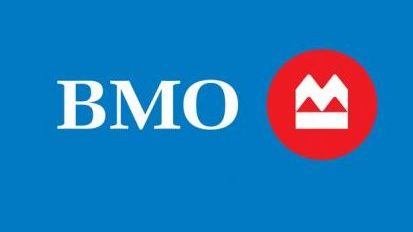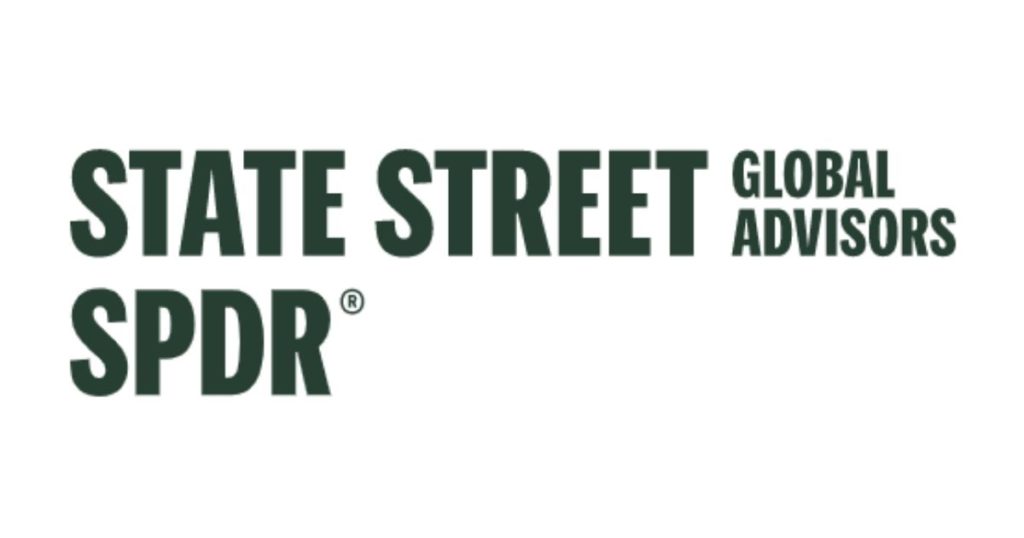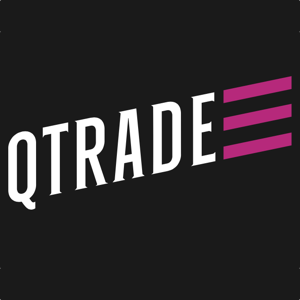The S&P 500 and NASDAQ 100 indices have been getting a lot of attention over the past several years as investors look to diversify internationally.
Since the Dow Jones Industrial Average (DJIA) only contains 30 stocks, it is much less diversified than the other two main indices.
In some cases, investors choose to purchase the stocks that are in the DJIA directly in their accounts.
The DJIA is less popular with index ETF investors, mostly because it is composed of much fewer stocks. This limits the ETF options that are available to buy, but we’ll go over the best Dow Jones ETFs in Canada below.
US to Canadian Dollar Currency Impact
When you are investing in a US ETF or security directly, you are typically required to buy it with US dollars.
There may be Canadian ETFs that are tracking US indices (such as the DJIA), which can be purchased with Canadian dollars. The alternative is to buy a DJIA ETF in US dollars on the US side of your account.
In theory, your return in Canadian dollars will be impacted by the change in the exchange rate between US and Canadian dollars. Some Canadian-listed ETFs that track US indices offer to hedge away currency risk.
Hedging currency exposure is not free, and there is always some marginal cost to eliminating your currency exposure. Hedging can also hurt your performance in Canadian dollars, if exchange rates move in your favour.
Best Dow Jones ETFs in Canada
Note that there aren’t many Dow Jones ETFs trading on Canadian stock exchanges, so I included several American ones as well.
- BMO Dow Jones Industrial Average Hedged to CAD Index ETF (ZDJ.TO)
- BMO Covered Call Dow Jones Industrial Average Hedged to CAD ETF (ZWA.TO)
- SPDR Dow Jones Industrial Average ETF Trust (DIA)
- ProShares Ultra Dow30 ETF (DDM)
- ProShares UltraPro Dow30 ETF (UDOW)
- Global X Dow 30 Covered Call (DJIA)
1. BMO Dow Jones Industrial Average Hedged to CAD Index ETF

- Ticker: ZDJ.TO
- Inception Date: May 29, 2009
- Assets under Management: $266.6 million
- Management Expense Ratio: 0.26%
- Stock Price: $59.48
- YTD Return: 1.22%
The ZDJ ETF provides investors with the performance of the DJIA, with exchange rate fluctuations between the US and Canadian dollar being hedged away.
ZDJ is a reasonably-sized ETF, with an MER that is fairly reasonable for a passive index ETF. The cost of hedging away any currency exposure is included in the MER.
Currently, the ZDJ is the only ETF tracking the DJIA in Canada, meaning that it is available in Canadian dollars.
2. BMO Covered Call Dow Jones Industrial Average Hedged to CAD ETF

- Ticker: ZWA.TO
- Inception Date: October 20, 2011
- Assets under Management: $194.48 million
- Management Expense Ratio: 0.65%
- Yield: 6.71%
- Stock Price: $25.24
- YTD Return: 0.87%
ZWA offers similar exposure to the DJIA as the ZDJ ETF above, but with the addition of a covered call strategy. The covered call strategy offers a strong income potential on a monthly basis.
The nature of covered calls reduces market volatility slightly – you should lose less money on the way down, and you may make less money if markets rise sharply.
Our review of BMO’s ZWC ETF, which uses a similar covered call approach, explains the strategy more in-depth.
ZWA is a fairly sized ETF, with a high MER. The higher MER covers the currency hedging of the strategy, as well as the covered call options strategy that the managers are using.
ZWA is offered in Canadian dollars, so you won’t need to convert to USD to access this covered call DJIA strategy.
3. SPDR Dow Jones Industrial Average ETF Trust

- Ticker: DIA
- Inception Date: January 14, 1998
- Assets under Management: $27.85 billion
- Management Expense Ratio: 0.16%
- Yield: 2.00%
- Stock Price: $382.87
- YTD Return: 1.3%
DIA aims to replicate the performance of the DJIA, in US dollars. This is the oldest ETFs that tracks the DJIA, and has accumulated a lot of assets.
DIA’s MER is affordable, as it is a passive ETF. Keep in mind that US dollar passive ETFs tracking US indices tend to have much lower MERs than their Canadian dollar counterparts.
Since DIA is offered in US dollars, you will need to purchase it on the US side of your accounts.

- Ticker: DDM
- Inception Date: June 19, 2006
- Assets under Management: $320.23 million
- Management Expense Ratio: 0.95%
- Yield: 0.37%
- Stock Price: $81.05
- YTD Return: 1.93%
DDM is a leveraged DJIA ETF, which aims for twice the daily performance of the index. This is another US dollar ETF that will need to be purchased on the US side of your accounts.
DDM’s MER is high, mainly because of its leveraged structure. The ETF aims for twice the performance of the DJIA on a daily basis, but longer-term performance may be different because of the compounding of returns.
Since DDM is leveraged, it is also a higher-risk ETF than the non-leveraged ETFs on this list.

- Ticker: UDOW
- Inception Date: February 9, 2010
- Assets under Management: $537.35 million
- Management Expense Ratio: 0.95%
- Yield: 1.38%
- Stock Price: $76.65
- YTD Return: 2.65%
If you are looking for even more leverage than just simply two times the performance of the DJIA (through DDM), UDOW is the ETF for you.
UDOW offers three times DJIA’s performance, which it aims to return on a day-to-day basis. Again, longer-term performance may be different because of the compounding effect of returns.
The ETF is offered in US dollars, and its MER is again fairly high when compared to others on this list. Keep in mind that when leverage is being used in an ETF, the riskiness of the ETF increases significantly.
6. Global X Dow 30 Covered Call

- Ticker: DJIA
- Inception Date: February 23, 2022
- Assets under Management: $79.55 million
- Management Expense Ratio: 0.60%
- Yield: 7.82%
- Stock Price: $22.31
The DJIA ETF shares the same ticker as the Dow Jones Industrial Average, and is the US equivalent of BMO’s ZWA ETF.
The ETF uses a covered call strategy to provide monthly income to investors and to smooth out returns slightly.
This ETF is much smaller and newer than the others on the list. This puts it at risk of closing down if it doesn’t attract enough investors to keep the strategy profitable.
The MER is also fairly high, but is lower than ZWA on the Canadian dollar side.
Does Vanguard offer a Dow Jones Industrial Average ETF?
One of the key players in the passive ETF space is Vanguard, especially in the US. Since the DJIA index is easier to replicate by buying its stocks directly, there are fewer ETF providers offering an ETF that tracks it.
Vanguard does not currently offer an ETF that tracks the DJIA.
What is the best ETF to short the Dow?
If you are looking for short exposure to the Dow Jones Industrial Average, we recommend two approaches.
Shorting the DIA ETF
An ETF can be short-sold, similar to most stocks. Since the DIA seeks to replicate the performance of the DJIA most closely, this is the best ETF to short.
This will give you inverse exposure to the performance of the DJIA on the US side of your accounts.
Keep in mind that short-selling any investment has very different risks from traditional long-only investments.
Your losses can theoretically be infinite, so be sure to do your research before short-selling any stock or ETF.
Buying an Inverse DJIA ETF
Another option is to buy an inverse ETF that tracks the DJIA. A good option here is the ProShares Short Dow30 ETF. The ticker for this ETF is DOG.
Keep in mind that DOG, like most inverse ETFs, only seek to replicate the inverse performance of their benchmarks on a day-to-day basis. Over a long period of time, the return may not be exactly the inverse of the DJIA.
Stocks Currently in the Dow Jones Industrial Average
The DJIA contains 30 blue-chip stocks, and is a price-weighted index as opposed to a market-capitalization-weighted index. As of May 7, 2022, the 30 stocks include:
- American Express Co
- Amgen Inc
- Apple Inc
- Boeing Co
- Caterpillar Inc
- Cisco Systems Inc
- Chevron Corp
- Goldman Sachs Group Inc
- Home Depot Inc
- Honeywell International Inc
- International Business Machines Corp
- Intel Corp
- Johnson & Johnson
- Coca-Cola Co
- JPMorgan Chase & Co
- McDonald’s Corp
- 3M Co
- Merck & Co Inc
- Microsoft Corp
- Nike Inc
- Procter & Gamble Co
- Travelers Companies Inc
- UnitedHealth Group Inc
- Salesforce Inc
- Verizon Communications Inc
- Visa Inc
- Walgreens Boots Alliance Inc
- Walmart Inc
- Walt Disney Co
- Dow Inc
differences between a NASDAQ ETF and a Dow Jones ETF
A NASDAQ ETF in Canada is designed to track the performance of the NASDAQ Composite or the NASDAQ-100 index, which primarily consists of technology and internet-related companies, although it has a broad range of industries represented.
On the other hand, a Dow Jones ETF focuses on the Dow Jones Industrial Average, an index comprised of 30 significant U.S. companies spanning various sectors, seen as a reflection of the overall health of the U.S. economy.
The main difference lies in the composition and focus of the indices they track: NASDAQ ETFs are more tech-centric, while Dow Jones ETFs provide a broader snapshot of major U.S. industrial giants.
How to Buy Dow Jones ETFs in Canada
The cheapest way to buy ETFs is from discount brokers. My top choices in Canada are:

- 105 commission-free ETFs to buy and sell
- Excellent customer service
- Top-notch market research tools
- Easy-to-use and stable platform

- Stock and ETF buys and sells have $0 trading fees
- Desktop and mobile trading
- Reputable fintech company
- Fractional shares available
To learn more, check out my full breakdown of the best trading platforms in Canada.
Conclusion

The Dow Jones is not my favourite index to invest in with an ETF, but I’ve given you several good options above.
Since the DJIA only contains 30 US stocks, make sure to consider other dividend-paying ETFs for your portfolio or the best S&P 500 ETFs in Canada.





